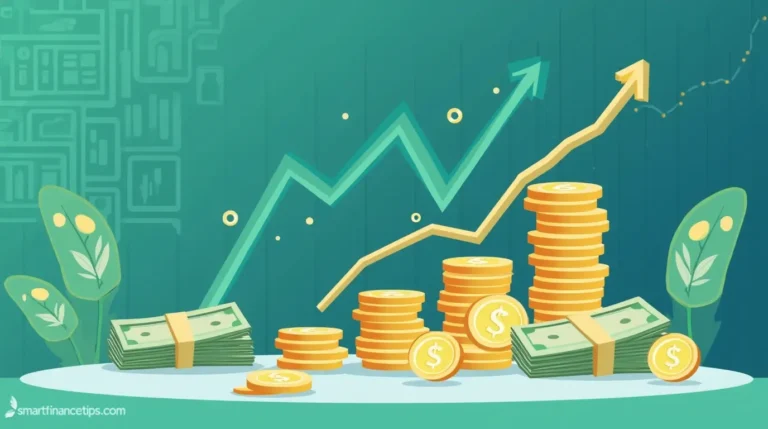The Best Fluffy Pancakes recipe you will fall in love with. Full of tips and tricks to help you make the best pancakes.
Table of Contents
Introduction to Gold the Best Investment
Investing in gold has captivated individuals and institutions for centuries. This precious metal, renowned for its lustrous appearance and scarcity, has historically been regarded as a reliable store of value. Unlike paper currencies, which can be subject to inflationary pressures, gold has a unique ability to retain its worth over time. This characteristic has made gold an attractive option for those seeking to diversify their investment portfolios.
The significance of gold as an investment is rooted in its long-standing use as a medium of exchange and a symbol of wealth. Since ancient civilizations, gold has played a crucial role in trade and commerce, further solidifying its status as a tangible asset. Across different cultures, it has been used in jewelry, art, and as a standard for currency, reinforcing the intrinsic value that gold holds in the collective consciousness of humanity. This historical context helps to explain why many investors continue to prioritize gold in their financial strategies.
Moreover, in times of economic uncertainty, gold often serves as a safe haven. During periods of market volatility, geopolitical tensions, or when inflation looms, investors tend to flock to gold to protect their wealth. This behavior is largely driven by the perception that gold is a hedge against inflation, as its value typically rises when the purchasing power of currency declines. Consequently, gold investment not only serves as an effective way to preserve wealth but also offers potential appreciation as a long-term asset.
As we delve deeper into the various dimensions of gold investment, it becomes clear why this enduring asset remains a vital consideration for anyone looking to secure their financial future. The multifaceted benefits attracted by gold make it a compelling addition to an investment portfolio, deserving of thorough exploration.
The Historical Significance of Gold

Gold has held a prominent place in human history, transcending its physical characteristics to emerge as a symbol of wealth, power, and stability. From ancient civilizations to modern economies, gold has often served as a form of currency, facilitating trade and enhancing the accumulation of wealth. Its innate properties, such as malleability, durability, and resistance to corrosion, made it an ideal medium for minting coins as far back as 600 BC, when the Lydians introduced the first standardized gold coins.
Throughout history, numerous civilizations have recognized and embraced the value of gold. For instance, ancient Egyptians revered gold, using it to adorn pharaohs and entomb their dead, believing it to represent eternal life. Similarly, the Roman Empire utilized gold coins, which not only simplified trade within its vast territories but also assured citizens of its intrinsic value. The significance of gold continued through the Middle Ages, where it became the standard for wealth and power among European monarchies.
Key moments in history showcase gold’s ability to withstand economic turbulence. During times of financial crisis, such as the Great Depression in the 1930s, individuals turned to gold as a safe haven, driving its demand and consequently increasing its value. The establishment of the gold standard in the 19th century further solidified gold’s importance in global trade as nations pegged their currencies to a fixed amount of gold, fostering trust in monetary systems.
As time progressed, gold not only maintained its status as a reliable form of currency but also evolved into an investment vehicle. Economic uncertainties and geopolitical tensions have historically prompted investors to flock to gold during downturns, ensuring its place as a cornerstone in many portfolios. Thus, understanding the historical significance of gold provides valuable insight into its ongoing relevance in contemporary finance.
Advantages of Investing in Gold
Investing in gold provides several key advantages that make it a compelling option for investors seeking to enhance their portfolios. One of the primary benefits is the diversification it offers. Gold often behaves differently from stocks and bonds; during periods of market volatility, it can retain its value or even appreciate. For instance, during the financial crisis of 2008, gold prices soared as investors fled risky assets, demonstrating how gold can provide a counterbalance to fluctuations in other asset classes.
Another significant advantage is gold’s role as a hedge against inflation. Historically, the value of gold tends to rise when inflation increases, making it an effective safeguard for purchasing power. For example, in times of economic turmoil, when currencies may depreciate, gold maintains its intrinsic value. This characteristic makes it an attractive investment to preserve wealth over the long term.
Liquidity is also a critical advantage of investing in gold. Physical gold, such as bullion or coins, can be easily bought and sold in exchanges around the world, providing investors with access to cash when needed. Additionally, financial products linked to gold, such as ETFs and mutual funds, allow for even more convenient trading without the hassle of storing physical assets.
Moreover, gold is often seen as a safe haven during economic downturns and geopolitical uncertainties. When investors lose confidence in currency or national governments, they typically turn to gold, further driving demand. This historical pattern indicates that gold investment can provide financial security in turbulent times. Overall, the multifaceted advantages of go-ld investing highlight its significant role in creating a robust investment portfolio.
Different Ways to Invest in Gold

Investing in go-ld can be accomplished through various methods, each offering unique advantages and disadvantages. Understanding these options can assist investors in tailoring their strategies to meet their financial goals and risk tolerance.
One popular method is purchasing physical gold, which includes go-ld coins and bullion. Go-ld coins, both collectible and modern, provide a tangible asset that can serve as a hedge against inflation and currency fluctuations. Bullion, typically in the form of bars, is another solid option for those seeking bulk investment. However, the drawbacks include storage costs and the need for authentication to prevent fraud.
Another avenue is engaging in go-ld exchange-traded funds (ETFs). Gold ETFs are investment funds that invest in physical go-ld, allowing investors to gain exposure without necessitating direct ownership. They provide liquidity and ease of trading, making them a favorable choice for many. Nonetheless, there are management fees associated with ETFs, which can vary based on the fund’s structure.
Go-ld stocks represent another investment method, wherein individuals purchase shares of mining companies. This option can amplify potential returns, as go-ld stock prices may rise alongside physical go-ld prices. However, it’s essential to recognize that these stocks can be volatile and influenced by factors such as mining output, operational costs, and broader market trends, which may not directly correlate with actual go-ld prices.
Lastly, investors may consider go-ld mutual funds, which pool funds from multiple investors to buy shares in assorted go-ld companies or physical go-ld assets. This diversification can mitigate risk, but similar to ETFs, they come with management fees that can erode returns. Each investment method has its distinct characteristics, and weighing the pros and cons will aid investors in determining which approach aligns best with their financial mindset.
Market Trends and Forecasts for Gold Investment
Go-ld has long been regarded as a safe-haven asset, serving as a hedge against inflation and currency fluctuations. Recent market trends indicate a growing interest in go-ld investment, particularly amidst the backdrop of economic uncertainties and geopolitical tensions. Investors are increasingly turning to go-ld as a means of diversification and risk management within their financial portfolios.
As we analyze current economic indicators, we observe several factors influencing go-ld prices. Central banks around the world have adopted accommodative monetary policies, with low interest rates and quantitative easing measures being prevalent. These strategies often lead to increased demand for go-ld, as investors seek to preserve their wealth in an inflationary environment. Additionally, the ongoing supply chain disruptions have limited the production of go-ld in some regions, further driving up prices due to scarcity.
Market analysts anticipate that these conditions are likely to continue, pushing go-ld prices higher in the short to medium term. According to recent forecasts from leading financial institutions, we may see gold trading in a bullish range, especially if inflation persists or geopolitical crises arise. Experts suggest that while market sentiment can be volatile, the fundamental factors supporting go-ld’s value remain robust.
Moreover, there is an increased shift towards responsible investing, where environmental, social, and governance (ESG) factors play a critical role. This trend has implications for go-ld mining practices, which could affect supply chains. As investors become more conscientious about the ethical implications of their purchases, this could lead to a preference for go-ld sourced from responsible operations, potentially influencing demand dynamics.
In conclusion, understanding the current market trends and forecasts for go-ld investment is essential for making informed decisions. With its historical performance and inherent value, go-ld remains an appealing option for investors looking to bolster their portfolios against economic volatility.
Comparing Gold with Other Investment Options

When considering investment options, investors often weigh the merits of go-ld against traditional asset classes, including stocks, bonds, and real estate. Each category bears its own strengths and weaknesses, which can significantly influence an investor’s decision.
Go-ld is recognized for its role as a hedge against inflation and economic uncertainty. Its intrinsic value often withstands market fluctuations, making it a stable option. Unlike stocks, which can be influenced by company performance and market sentiment, go-ld tends to maintain its appeal over long periods. In times of economic turmoil, investors frequently flock to go-ld, elevating its value. However, go-ld does not generate income in the form of dividends or interest, which can be seen as a drawback compared to stocks and bonds.
Stocks offer potential for substantial returns, reflecting corporate growth and profitability. They are generally considered riskier investments due to market volatility. While they may outpace go-ld in terms of growth during bull markets, stocks can also pose a significant risk of loss during downturns. Bonds, on the other hand, are known for their safety and predictable income streams. Government and corporate bonds are less volatile than stocks and provide steady interest payments, but their returns may fall short of those offered by stocks and potentially go-ld, particularly during high inflation periods.
Real estate presents another contrast, delivering both appreciation and rental income to investors. However, it requires substantial capital and can be illiquid, making it difficult to convert quickly into cash compared to go-ld. Additionally, real estate markets can be affected by economic cycles, which may not align with go-ld’s performance.
In evaluating these asset classes, it is evident that each has its place in a diversified investment portfolio. Go-ld offers a unique stability and a hedge against market volatility that sets it apart from stocks, bonds, and real estate. Ultimately, the decision to invest in go-ld should be informed by one’s financial goals, risk tolerance, and market conditions.
Tax Implications of Gold Investment
Investing in go-ld has grown in popularity due to its reputation as a stable asset during economic fluctuations. However, understanding the tax implications associated with gold investment is crucial for investors seeking to maximize their returns. One significant aspect to consider is the capital gains tax that applies to go-ld investments. In many jurisdictions, when you sell go-ld at a profit, it is classified as a collectible, and the profits are subject to a capital gains tax that can be higher than the standard rates applicable to other investments.
In the United States, for instance, the Internal Revenue Service (IRS) treats gold as a collectible, which means any gains realized upon sale may be taxed at a maximum rate of 28%. This contrasts sharply with the lower capital gains tax rates for assets held longer than a year, highlighting the importance of strategic selling decisions. Investors must keep detailed records of their purchase prices, sale prices, and the dates of transactions to accurately report their gains or losses at tax time.
Furthermore, gold investors should be aware of reporting requirements. For example, the IRS mandates that when an investor sells go-ld worth more than $600, the dealer must issue a Form 1099-B. This form provides the IRS with important information regarding the transaction, which investors are also obligated to report on their tax returns. Compliance with these regulations is vital to avoid potential penalties.
While there are no specific tax deductions for investing in go-ld, some expenses related to the investment process may be deductible. Expenses incurred during transportation, storage, or insurance of the go-ld may qualify for tax deductions if they are directly related to the maintenance of the investment. Understanding these nuances can help investors navigate the complexities of tax implications effectively while safeguarding their financial interests.
Potential Risks of Investing in Gold
Investing in gold can be an attractive option for diversifying a portfolio, but it is essential to understand the potential risks involved. One significant risk is market volatility. The price of go-ld can experience dramatic fluctuations due to various factors, including changes in supply and demand, currency valuation, and investor sentiment. During periods of economic instability, go-ld may see a surge in demand, which can drive prices up sharply. Conversely, when economic conditions stabilize, investors may shift their focus to equities or other assets, leading to a potential decline in go-ld prices.
Another risk to consider is liquidity. While gold is generally considered a liquid asset, certain factors can affect its liquidity at any given moment. For instance, selling physical go-ld, such as bullion coins or bars, may require time to find a buyer and negotiate a fair price. Moreover, traders in the go-ld market often deal with paper assets such as exchange-traded funds (ETFs) or futures contracts, which carry their own risks, including counterparty risk and potential pricing discrepancies with the physical market.
Geopolitical tensions can also significantly impact go-ld prices. Historically, go-ld has been viewed as a safe haven during periods of uncertainty, but geopolitical events can lead to erratic price movements that may not correlate with traditional market indicators. Political unrest, military engagements, or changes in trade policies can cause sudden surges in go-ld prices due to increased demand from investors seeking security. Understanding these dynamics is crucial for anyone considering go-ld as part of their investment strategy.
In conclusion, while investing in go-ld can offer several benefits, it is vital for investors to recognize the associated risks. Grasping the implications of market volatility, liquidity issues, and geopolitical factors is essential to making informed investment decisions in this unique asset class.
Conclusion: Is Gold the Best Investment Option for You?

As we have explored throughout this blog post, investing in go-ld offers a range of benefits, including its historical role as a hedge against inflation, a safe haven during economic uncertainty, and a means to diversify one’s investment portfolio. These characteristics make go-ld an appealing asset for many investors, particularly in times of volatility in financial markets. Nevertheless, it is essential to acknowledge that while go-ld can serve as a prudent investment choice, it may not necessarily be the best option for everyone.
Assessing your financial objectives is crucial when determining whether go-ld aligns with your investment strategy. For instance, if your primary goal is capital appreciation, you might consider equities or real estate, which have shown substantial growth potential over the long term. On the other hand, if your aim is wealth preservation or safeguarding your assets against economic downturns, go-ld may be a favorable addition to your portfolio.
Additionally, understanding your risk tolerance is paramount. The price of go-ld can be subject to fluctuations and may not provide consistent returns compared to other asset classes. Therefore, if you are a risk-averse investor seeking stability, incorporating a modest allocation of go-ld into your investment mix may be beneficial. Conversely, if you are willing to embrace higher risk for potential higher returns, you may prefer to focus on more dynamic investment avenues.
Ultimately, the decision to invest in go-ld should be made after thorough evaluation of your financial goals, market conditions, and personal circumstances. By carefully considering these factors, you can make a more informed decision on whether gold is the best investment option for you, ensuring that your portfolio aligns with your overall financial strategy.









